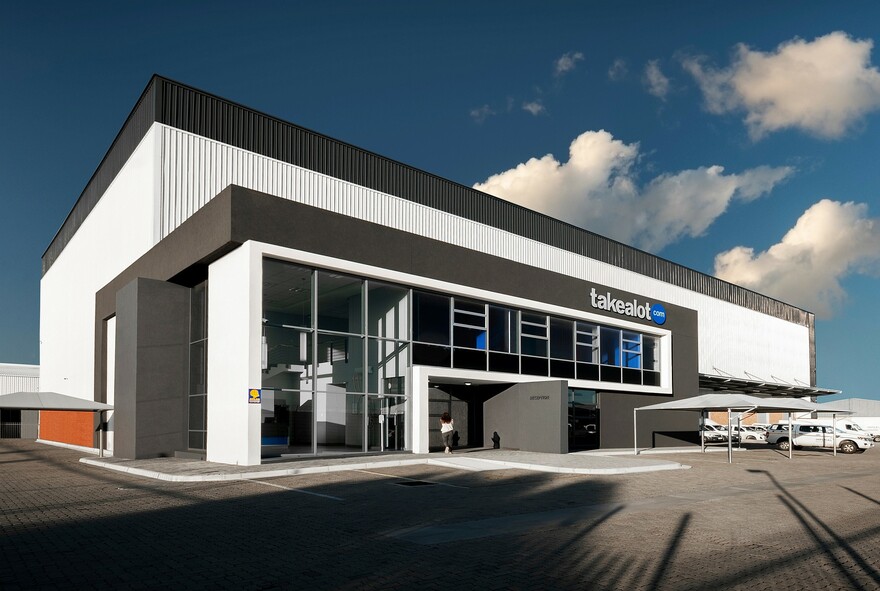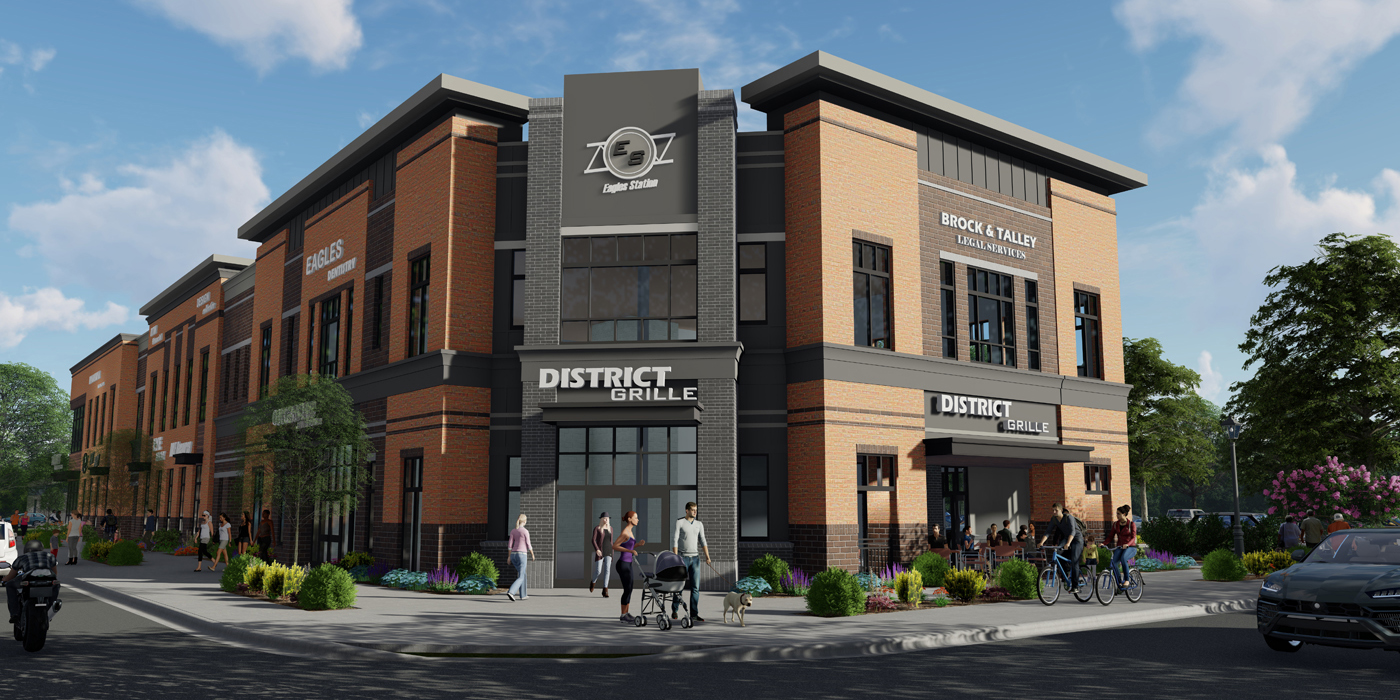Unveiling the Comprehensive Providers Offered by Commercial Architects for Modern Developments
Commercial Architects serve a critical feature in contemporary development projects. They blend layout appearances with functionality while sticking to regulatory requirements. Their experience prolongs beyond mere construction, integrating lasting methods and ingenious modern technologies. As they navigate intricate zoning laws, Architects team up with various stakeholders to bring visions to life. This multifaceted method questions about the advancing role of Architects fit contemporary spaces and the impact of their work on future growths.
Comprehending the Role of Commercial Architects in Modern Developments
In contemporary urban landscapes, Commercial Architects play a vital role in forming useful and visual areas that satisfy varied business requirements. Their know-how extends past plain layout; they browse complex zoning legislations, constructing codes, and environmental guidelines. By collaborating with customers, they identify details demands, guaranteeing that each job straightens with the customer's vision while additionally taking into consideration sensible facets such as sustainability and cost-effectiveness. Commercial Architects are experienced at incorporating ingenious innovations and products into their layouts, improving both the functionality and power effectiveness of structures. They carry out comprehensive site analyses to analyze the prospective challenges and possibilities offered by a location. Furthermore, effective interaction with service providers and various other stakeholders is necessary, guaranteeing that the task proceeds efficiently from conception to completion. Eventually, Commercial Architects contribute in developing areas that not only meet functional purposes but likewise add to the total personality and vibrancy of metropolitan environments.
Idea Design: Changing Ideas Into Truth
Idea design serves as a vital stage in Commercial style, where innovative style services arise from creative thinking. This process counts on collaborative ideation, uniting diverse viewpoints to refine and enhance initial concepts. As concepts take form, they transform from abstract notions right into concrete building realities.
Cutting-edge Style Solutions
Changing concepts into truth is the hallmark of cutting-edge design services in Commercial style. These services mix creative thinking with performance, resolving the special demands of modern advancements. By leveraging advanced innovations and lasting techniques, Architects craft spaces that are not just aesthetically enticing yet additionally reliable and adaptable. Focus on user experience drives the style process, making sure that atmospheres foster productivity and partnership. Each project take advantage of a tailored approach, where ideas are thoroughly established to reflect the client's vision while taking into consideration future trends. Cutting-edge layout services likewise prioritize adaptability, enabling for alterations in time as service demands develop. Inevitably, these approaches enhance the general worth of Commercial rooms, making them crucial in today's competitive landscape.

Collective Ideation Refine
Partnership functions as the backbone of the ideation process in Commercial style, cultivating imagination and development amongst diverse stakeholders. Architects, clients, engineers, and neighborhood participants involve in dynamic discussions, ensuring that all point of views are taken into consideration. This comprehensive technique permits the exploration of numerous design concepts, encouraging distinct remedies that align with the job's vision. Through workshops and conceptualizing sessions, concepts develop and refine, transforming initial principles into tangible designs. Modern technology also plays an essential function, with tools such as Structure Information Modeling (BIM) helping with real-time partnership and adjustments. Ultimately, this joint ideation process not only boosts the layout result but additionally grows a feeling of ownership and investment amongst all celebrations involved, bring about successful Commercial growths.
Zoning Analysis: Navigating Rules and Compliance
As programmers commence on brand-new tasks, understanding zoning policies is crucial to guaranteeing compliance and preventing costly hold-ups. Zoning evaluation plays a crucial duty in this procedure, as it involves examining regional zoning laws that dictate land usage, building height, thickness, and problems. Commercial Architects possess the proficiency to navigate these complicated guidelines, aiding customers identify permitted uses and any kind of needed variations.
Sustainable Style Practices: Structure for the Future
Lasting layout techniques are progressively important in the domain of Commercial design, especially as environmental worries remain to intensify. Architects focus on environmentally friendly products, energy-efficient systems, and style approaches that reduce waste and ecological influence. Including eco-friendly power sources, such as photovoltaic panels and wind turbines, allows structures to generate their own power and reduce reliance on fossil fuels.Furthermore, sustainable layout stresses the significance of indoor environmental quality. This includes utilizing natural light, boosting air flow, and picking safe products to boost occupant health and wellness and performance. Green roofs and living wall surfaces are likewise prominent features that add to biodiversity and urban cooling.Additionally, Commercial Architects usually integrate water conservation techniques, like rain harvesting and drought-resistant landscaping. Through these innovative methods, they produce rooms that not just fulfill modern requirements but likewise foster a sustainable future, attending to the expanding need for liable advancement in the modern world.
Job Management: Ensuring Timely and Effective Implementation
Efficient job administration is vital for making certain that Commercial style tasks are finished in a timely manner and within budget plan. This duty includes a variety of duties, consisting of the sychronisation of various stakeholders, timelines, and sources. Commercial this post Architects utilize their expertise to develop in-depth project strategies that describe vital milestones and deliverables, permitting systematic development tracking.Regular interaction among group participants and customers is important, fostering transparency and facilitating prompt decision-making. Danger administration strategies are additionally employed to determine prospective difficulties early, enabling proactive remedies to be developed. By using innovative project administration devices, Architects can check project performance in real-time, making modifications as necessary to keep performance.
Interior Decoration: Developing Functional and Aesthetic Areas
Interior decoration plays a crucial duty in improving both capability and looks within Commercial spaces. Effective area preparation can enhance process and enhance individual experience, while visual design principles add to an aesthetically attractive atmosphere - commercial architects. With each other, these components create areas that are not just practical however additionally motivating
Room Planning Effectiveness
While making best use of the energy of readily available space, Commercial Architects prioritize space planning performance to create both functional and aesthetically pleasing environments. This approach entails careful analysis of the spatial layout to assure perfect use every square foot. Architects consider aspects such as operations, ease of access, and natural light to boost functionality. By tactically placing furnishings, tools, and workstations, they assist in movement and interaction among customers, advertising performance. Furthermore, zoning different areas for details features aids in taking care of noise and privacy, creating a harmonious environment. Through reliable room planning, Commercial Architects can transform restraints into opportunities, guaranteeing that each area meets the diverse needs of its owners while adhering to regulatory demands and industry criteria.
Visual Style Principles
Visual design concepts play a necessary official website role in forming environments that are not just functional however likewise visually enticing. These principles assist Commercial Architects in developing areas that reverberate with users while improving brand name identity. Key elements include balance, proportion, and harmony, which collaborate to develop a cohesive appearance. Color pattern and products are carefully picked to evoke wanted feelings and sustain the total theme. Furthermore, lighting plays an important function, influencing mood and exposure while highlighting building functions. By incorporating these concepts, Architects guarantee that spaces are not just functional but also inviting and motivating. Eventually, reliable visual style cultivates a positive customer experience, urging engagement and fulfillment in Commercial atmospheres.
Partnership With Stakeholders: Fostering Successful Partnerships
Successful partnerships in Commercial design rest on effective cooperation with stakeholders, making sure that every voice is heard and valued. This joint approach includes engaging numerous events, consisting of customers, contractors, and community participants, throughout the layout and advancement procedure. By cultivating open communication, Commercial Architects can attend to concerns, gather insights, and line up the project's vision with stakeholder expectations.The integration of diverse perspectives boosts creative thinking and development, resulting in even more functional and cosmetically pleasing designs. Routine conferences, responses sessions, and workshops promote this discussion, allowing Architects to adjust their plans in response to stakeholder input. Additionally, developing trust fund through transparency and liability enhances these collaborations, resulting in a smoother task execution.Ultimately, the success of contemporary developments depends upon the Architects' capability to browse and balance varying interests, producing a joint setting that promotes shared goals and mutual success.
Often Asked Concerns
Exactly How Do Commercial Architects Take Care Of Budget Plan Constraints Throughout a Project?

What Sorts of Software Application Do Commercial Architects Frequently Use?
Commercial Architects generally make use of software program such as AutoCAD for composing, Revit for Structure Information Modeling, SketchUp for 3D modeling, and job management tools like Microsoft Project to enhance collaboration and improve operations throughout the style procedure.
Can Commercial Architects Help With Acquiring Financing for Projects?
Commercial Architects can help in acquiring financing for tasks by preparing comprehensive propositions, assisting to articulate style visions, and offering financial estimates that can enhance the chance of safeguarding needed funding from investors or monetary organizations.
Just How Do Architects Ensure Security During the Building Refine?
Architects assure safety and security during building and construction by executing rigorous style criteria, coordinating with designers, performing routine site evaluations, adhering to regional regulations, and promoting communication among all stakeholders to reduce dangers and promote a safe functioning environment.
What Recurring Support Do Architects Offer After Job Completion?
After task conclusion, Architects provide ongoing support through upkeep examinations, efficiency analyses, and style alterations. They ensure buildings satisfy developing demands, address prospective issues, and keep conformity with guidelines, fostering a long-lasting relationship with customers.